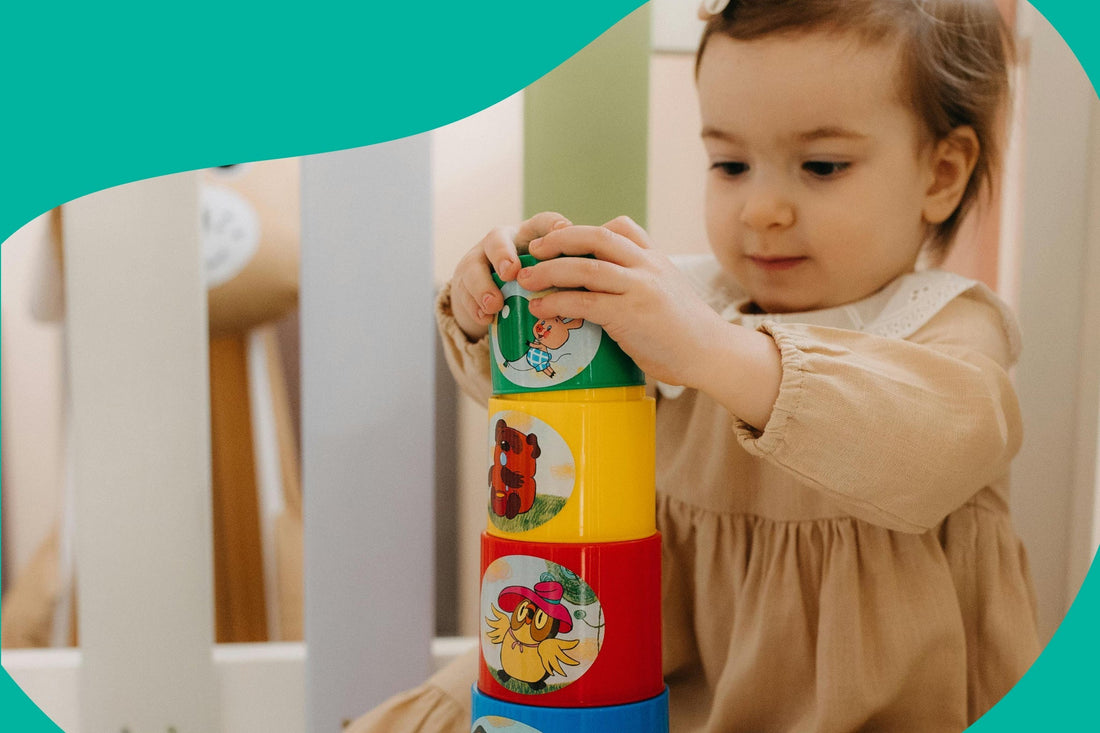
The Best Toys for Teaching Colors (Backed by Science)
Color recognition isn’t just about identifying shades, it’s a key step in early childhood development. Learning colors strengthens language skills, sharpens memory and even supports early math abilities. Research shows that engaging with colors in a hands-on way helps young minds absorb and retain information faster.
What to Look for in a Color-Learning Toy
The best color-learning toys invite kids to explore, interact, and make connections.
Look for:
- Bold, eye-catching colors that captivate young learners.
- Hands-on play to reinforce understanding through action.
- Sorting, matching or building features that boost problem-solving skills.
- Multi-sensory elements that engage touch, sight, and movement for better retention.
1. Color Matching Egg Set
A hands-on toy with an egg carton and 10 white eggs, that help kids recognize colors and shapes.
- Why it's great: A playful way for kids to match colors and shapes while refining their motor skills.
- Educational benefits: Develops problem-solving abilities and strengthens color differentiation.
- Science-backed insight: Categorization skills lay the foundation for logical thinking.
2. Melissa & Doug See & Spell Color Puzzle
A colorful wooden puzzle board for 4 to 7 year olds, great for hands-on, screen-free play.
- Why it's great: Combines color learning with letter recognition for a well-rounded educational experience.
- Educational benefits: Encourages spelling, word association, and color recognition simultaneously.
- Science-backed insight: Connecting colors with language enhances vocabulary retention.
3. Simon Says on Tokidos PlayCubes
An educational game where you snap, press and shake cubes to follow patterns of shapes and colors.
- Why it's great: A fast-paced, interactive game that blends color learning with social play.
- Educational benefits: Players improve their knowledge of colors, shapes, and patterns while strengthening logic and reaction skills. The increasing difficulty curve keeps kids engaged as they challenge themselves or their friends.
- Science-baked insight: Following commands in a game strengthens a child’s executive function skills, including attention control, working memory, and cognitive flexibility. Research shows that interactive play involving rules and sequences helps develop self-regulation and critical thinking, both essential for early learning.
4. Rainbow Stacking Cups
Colourful cups that stack to 10” tall that teach hand and eye coordination for kids.
- Why it's great: A simple toy that reinforces color recognition and spatial awareness.
- Educational benefits: Encourages problem-solving, coordination, and an understanding of size relationships.
- Science-backed insight: Bright colors improve memory retention and engagement.
5. Magic Color-Changing Water Books
An interactive book with adventures in the sea that reveal colors through water play.
- Why it's great: A mess-free, interactive way for kids to explore colors.
- Educational benefits: Supports creativity, fine motor development, and sensory learning.
- Science-backed insight: Multi-sensory experiences improve retention and recall of new concepts.
Learning colors can be an adventure. The right toys make all the difference by turning simple lessons into engaging, hands-on experiences. Whether stacking, matching, or playing interactive games, children absorb color concepts naturally while having fun. When you combine play with science-backed learning, your kiddos build skills that last far beyond their early years.
